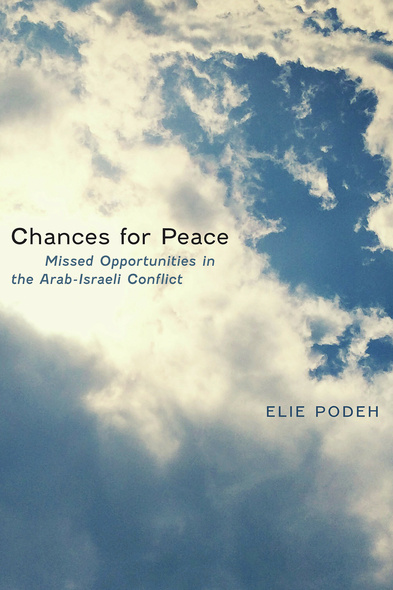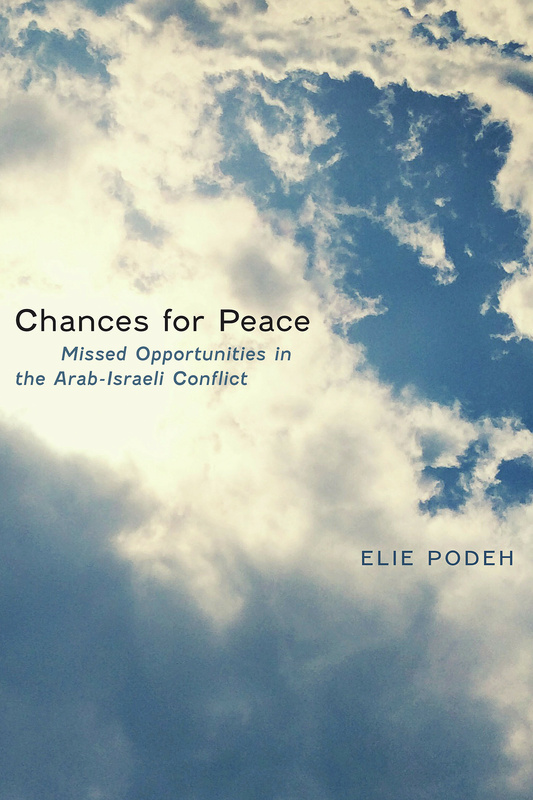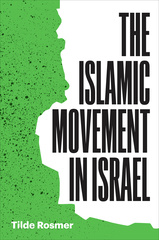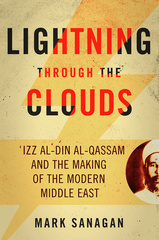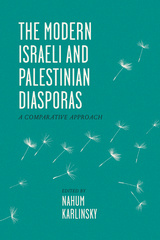Chances for Peace
Missed Opportunities in the Arab-Israeli Conflict
Drawing on a newly developed theoretical definition of “missed opportunity,” Chances for Peace uses extensive sources in English, Hebrew, and Arabic to systematically measure the potentiality levels of opportunity across some ninety years of attempted negotiations in the Arab-Israeli conflict. With enlightening revelations that defy conventional wisdom, this study provides a balanced account of the most significant attempts to forge peace, initiated by the world’s superpowers, the Arabs (including the Palestinians), and Israel. From Arab-Zionist negotiations at the end of World War I to the subsequent partition, the aftermath of the 1967 War and the Sadat Initiative, and numerous agreements throughout the 1980s and 1990s, concluding with the Annapolis Conference in 2007 and the Abu Mazen-Olmert talks in 2008, pioneering scholar Elie Podeh uses empirical criteria and diverse secondary sources to assess the protagonists’ roles at more than two dozen key junctures.
A resource that brings together historiography, political science, and the practice of peace negotiation, Podeh’s insightful exploration also showcases opportunities that were not missed. Three agreements in particular (Israeli-Egyptian, 1979; Israeli-Lebanese, 1983; and Israeli-Jordanian, 1994) illuminate important variables for forging new paths to successful negotiation. By applying his framework to a broad range of power brokers and time periods, Podeh also sheds light on numerous incidents that contradict official narratives. This unique approach is poised to reshape the realm of conflict resolution.
...Podeh makes a valuable contribution to the literature on confict resolution.
An ambitious and original work. This is the first attempt to investigate systematically missed opportunities in the Arab-Israeli conflict. Our ability to analyze or measure historical events that have not happened is obviously limited; this study is a brave attempt at overcoming this deficiency. This pioneering work offers a new theoretical framework that can be applied to other conflicts around the globe. Undoubtedly, it will lead readers to question the wisdom of policymakers, who have continuously missed opportunities for peace.
ELIE PODEH is a Bamberger and Fuld Chair in the Department of Islamic and Middle East Studies at the Hebrew University of Jerusalem and a senior research fellow at the Harry S. Truman Institute for the Advancement of Peace. He is also a board member of Mitvim—the Israeli Institute for Regional Foreign Policies.
- List of Maps
- Preface
- Prologue: A Story of an Opportunity Not Missed
- Introduction
- Chapter 1. The Faysal-Weizmann Agreement (1919)
- Chapter 2. The Peel Plan for Partition (1937)
- Chapter 3. The UN Partition Plan (1947)
- Chapter 4. Israeli-Jordanian Negotiations (1946–1951)
- Chapter 5. Israel and Syria: The Husni Zacim Initiative (1949)
- Chapter 6. Israeli-Egyptian Relations: The Alpha Plan and the Anderson Mission (1949–1956)
- Chapter 7. Egyptian-Israeli Contacts (1965-1966)
- Chapter 8. Israel's Peace Overtures in the Post-1967 Period
- Chapter 9. The Rogers Plan (1969)
- Chapter 10. The Jarring Mission and the Sadat Initiative (1971)
- Chapter 11. Disengagement Agreements with Egypt and Syria (1973–1975)
- Chapter 12. The Israeli-Egyptian Peace Treaty: An Opportunity Not Missed (1979)
- Chapter 13. The Arab Peace Plan and the Reagan Plan (September 1982)
- Chapter 14. The Israeli-Lebanese Peace Agreement (May 1983)
- Chapter 15. The London Agreement (April 1987)
- Chapter 16. The Shultz Initiative (1988) and the Shamir Peace Plan (1989)
- Chapter 17. The Madrid Conference (1991) and the Oslo Agreements (1993–2000)
- Chapter 18. The Israeli-Jordanian Peace Treaty (1994)
- Chapter 19. Israeli-Syrian Negotiations (1991–2000)
- Chapter 20. The Camp David Summit, the Clinton Parameters, and the Taba Talks (2000–2001)
- Chapter 21. Arab Peace Initiative (2002–2012)
- Chapter 22. The US Road Map (April 2003)
- Chapter 23. The Annapolis Conference and Abu Mazen-Olmert Talks (2007–2008)
- Conclusions
- Postscript
- References
- Index

